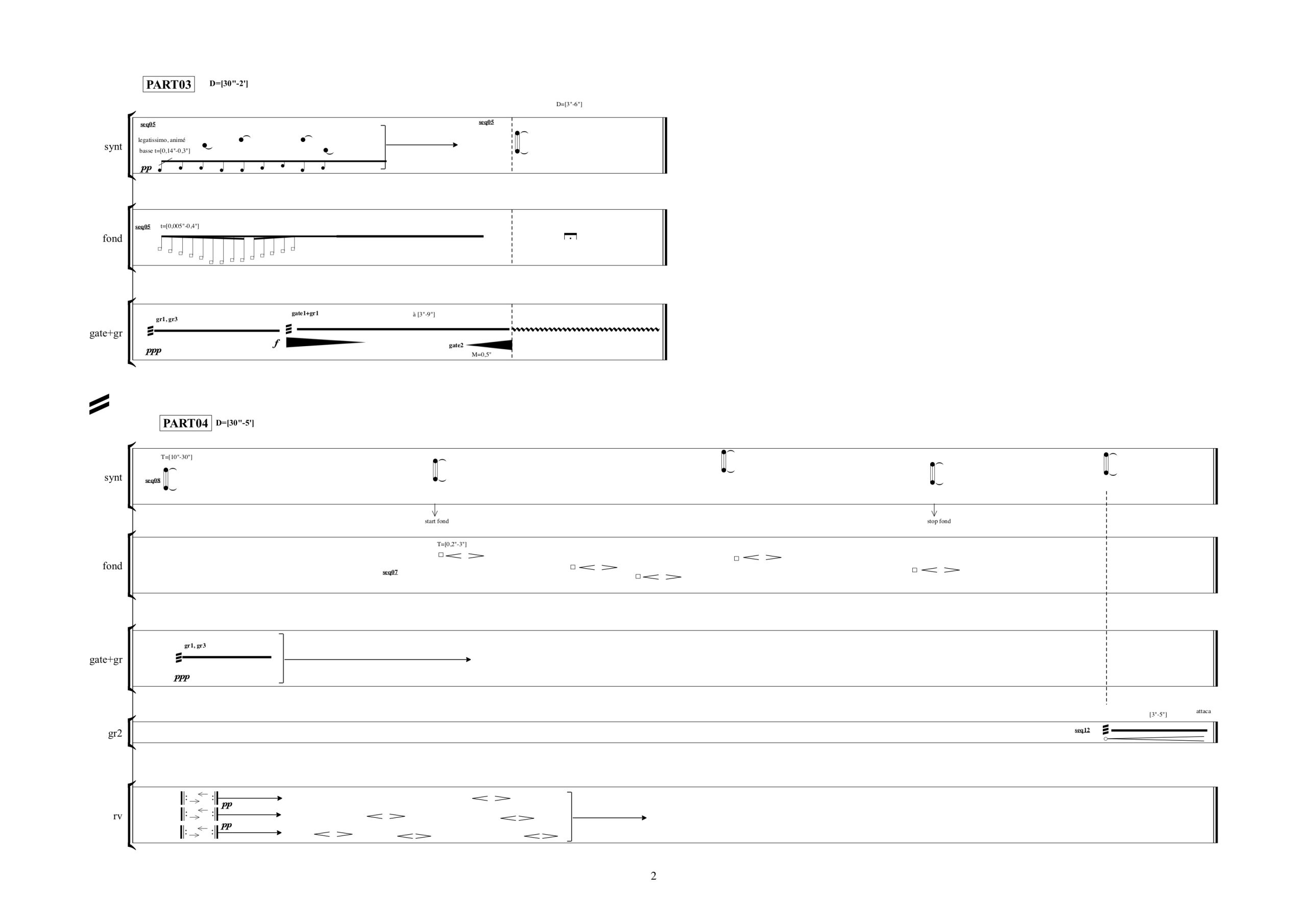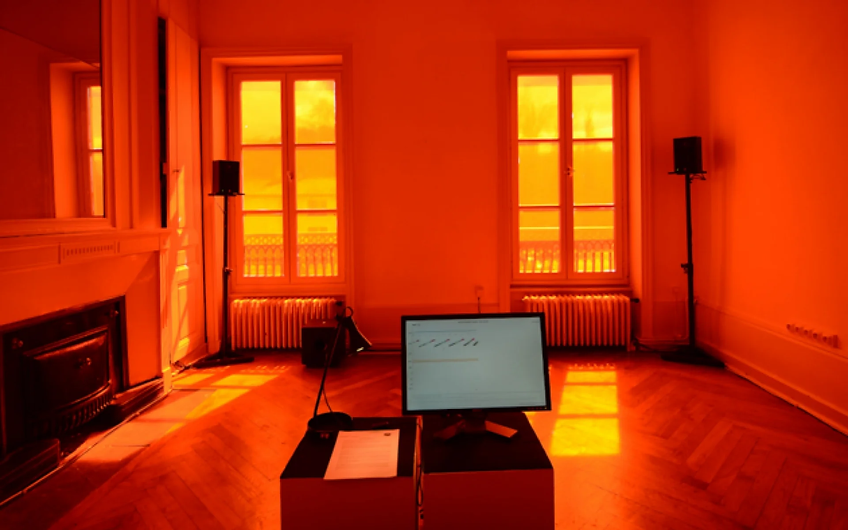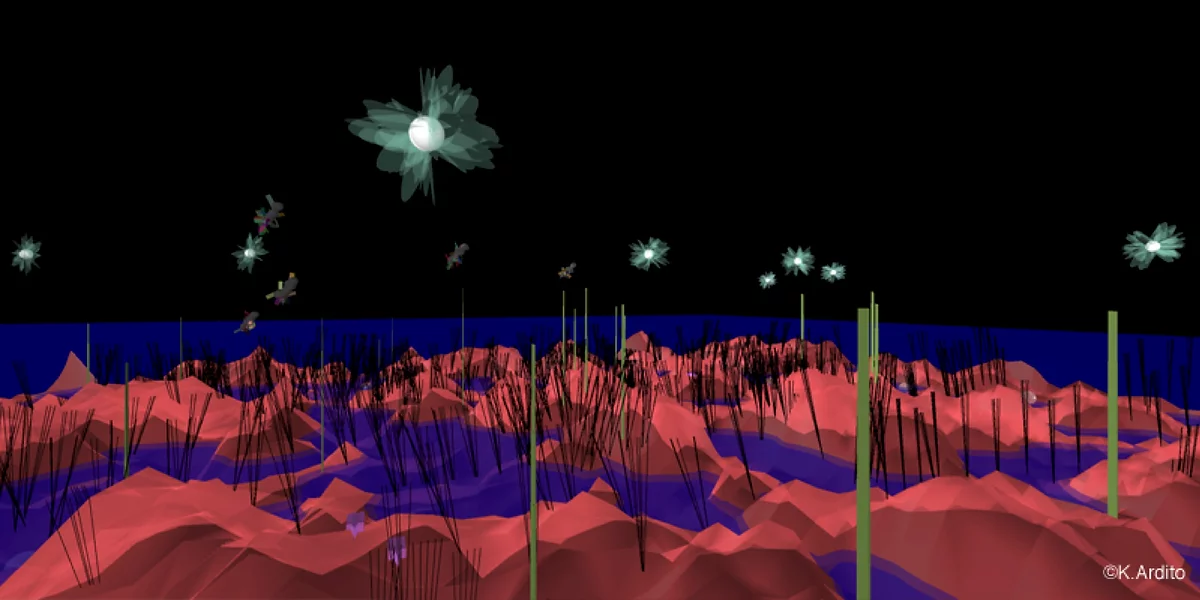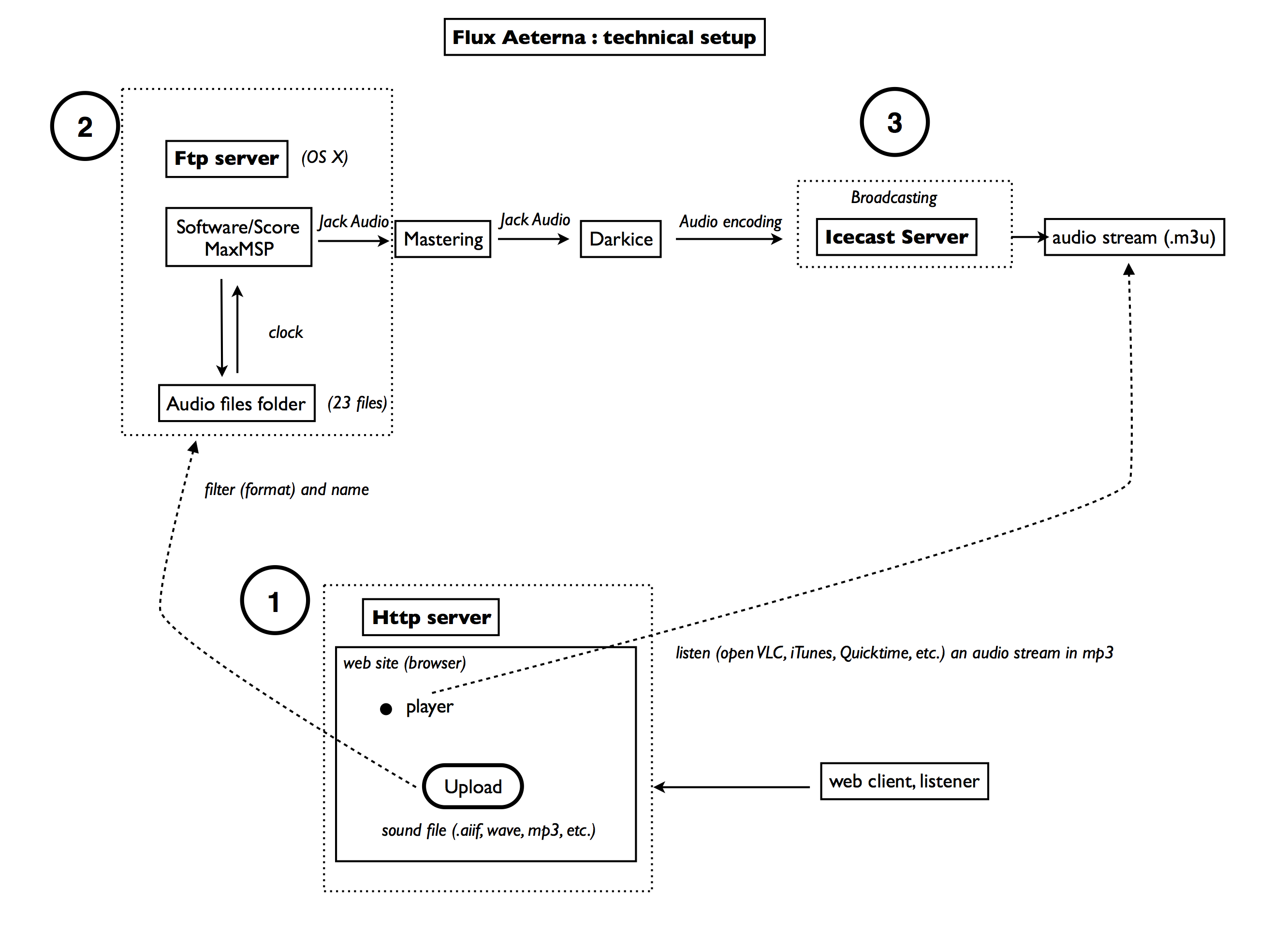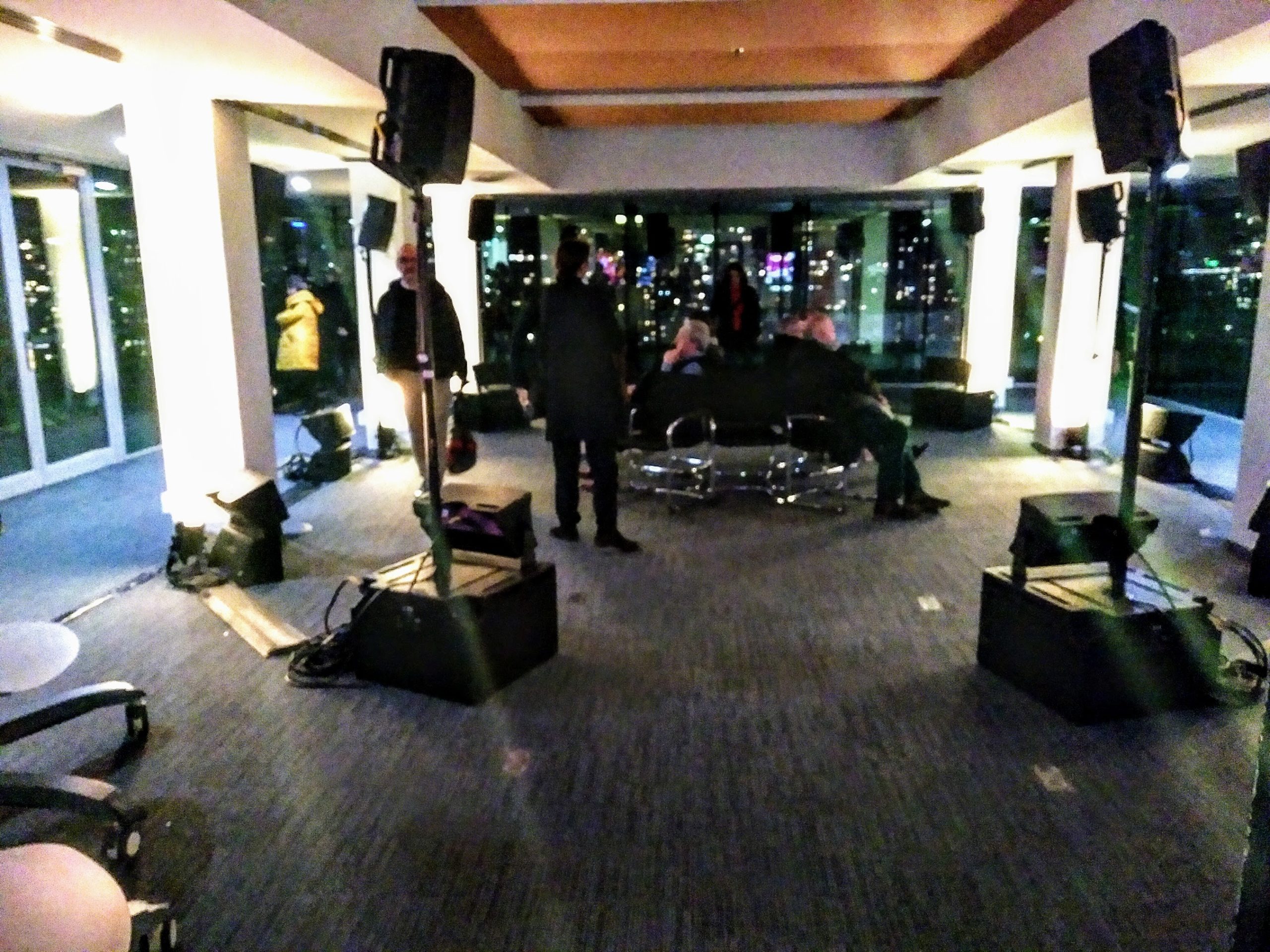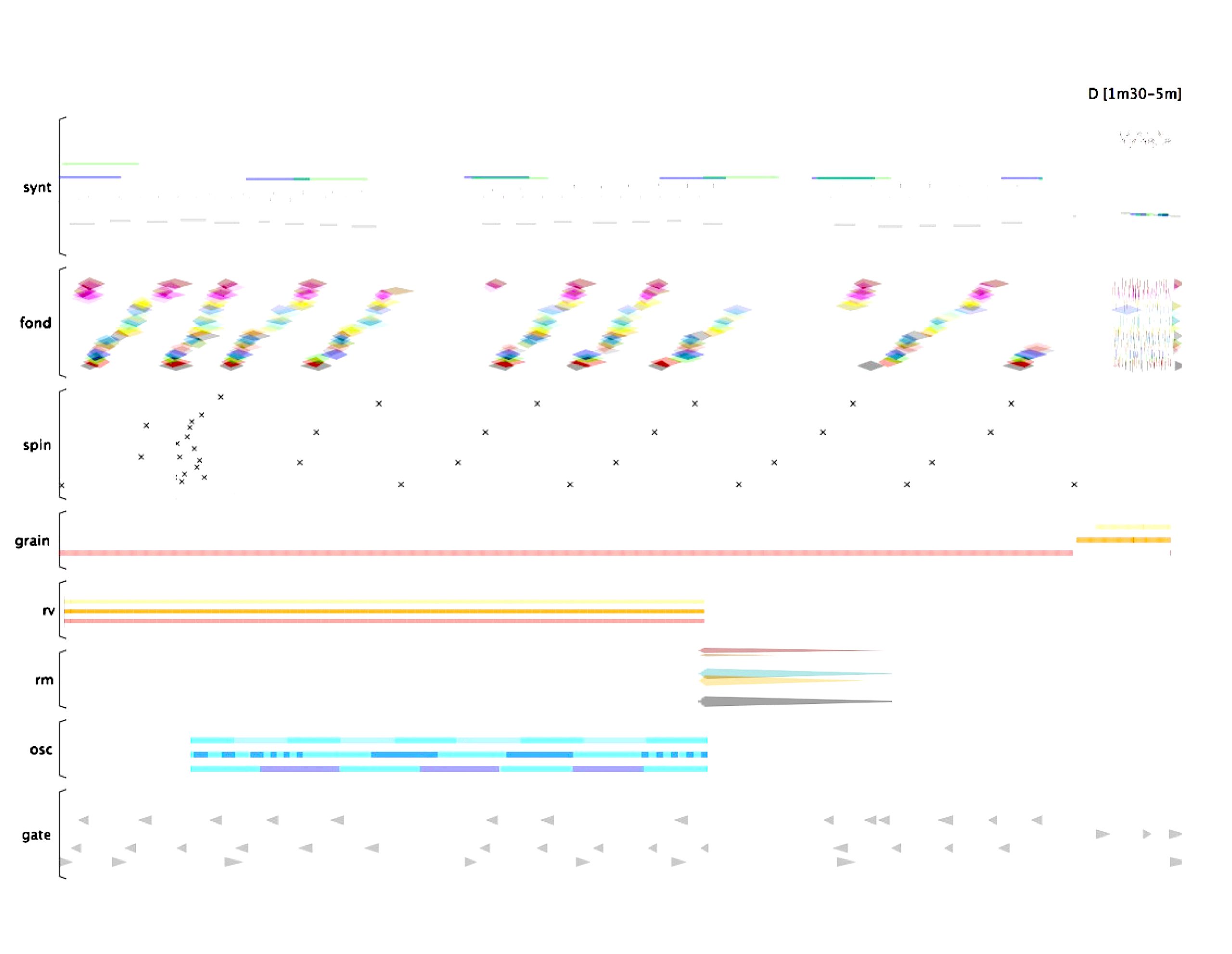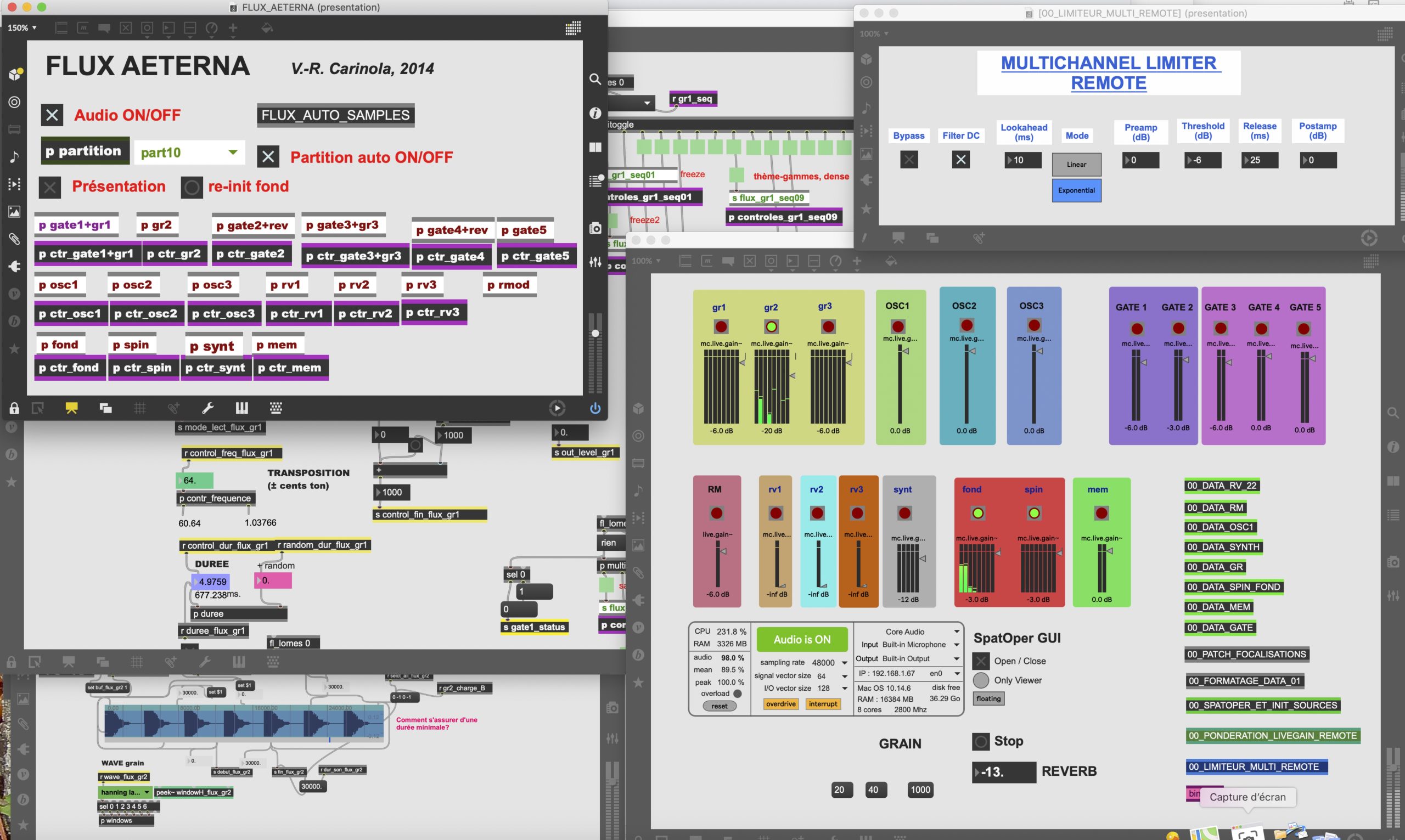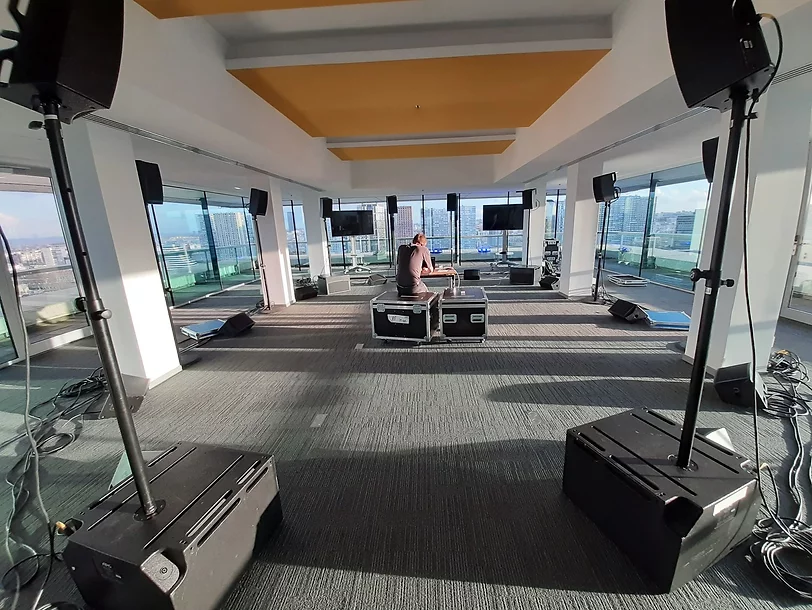Duration: Indefinite.
Flux Æterna is a musical composition for the Internet. It takes the form of an endless audio stream, streamed since July 2014. The music is generated live, it is a pure becoming, a succession of evanescent moments.
Listening to Flux Æterna is similar to listening to a web radio, but here the Internet user can influence the evolution of the work by contributing his own sound files.
How it works
The music is generated live from a broadcast server located at the University of Saint-Etienne. To listen to it on a desired duration, just click on the following link:
It is a computer program that "interprets" a generative score, i.e. a program that evolves continuously and plays with a repertoire of sounds by transforming them in different ways.
The listener can upload new sounds that will be integrated into the stream. To do this, simply click here and follow the instructions:
Thus, the directory of sounds (the "orchestra") evolves according to the contributions of the Internet users, the new ones replacing the older ones. However, the system contains an internal memory that can give voice to old sounds long after all the files have been renewed.
The way new sounds appear, their duration, their recurrence, are totally unpredictable for the listener but they remain (almost) always recognizable.
The transformations of the sounds are very limited, in order to respect their essence: fragmentations, transpositions, looping and, more rarely, filtering and modulation. The music takes literally the first meaning of the word to compose: to put together, that is to say, to give to hear an assembly of objects. These associations constitute new composite sound forms, always unexpected.
The score contains a detailed description of how the work works, from a technical and musical point of view.
Composition
The writing of Flux aeterna was done on two levels:
1) A patch realized with the MaxMSP software environment consisting in:
- the processing of the sounds transferred by the Internet users
- the reading of materials independent of the incoming files
The work is structured according to a certain number of parts (part01, part02...). Each part gathers different programs or sequences (seq01, seq02...) which control processing modules (granulation, looping, sample and hold, gates, modulation).
Thus, each part activates one or more modules (e.g. granulation, two loops, etc.), each module being controlled by a different program (control_grain_seq04, control_loop1_seq11, control_loop2_seq03 etc.). Each program or sequence has an internal operation that ensures its continuous evolution and renewal at each recurrence of the same part.
One could compare this to an ensemble of musicians (the modules), of which a subset (a soloist, a trio, the tutti) is called in each part to execute the movement of a specific score, but each time the same score is executed, it is the object of a different interpretation, or a variation of the same movement. Moreover, with each new call, each musician changes instrument, this one being dependent on the sounds sent by the Internet users, so that each variation is accompanied by a re-orchestration.
Moreover, each part contains an internal clock determining its duration, which also evolves for each recurrence. When the duration has elapsed, we move on to the next part. Some programs and modules have only a cadential or transition function.
Les enchaînements d’une section à l’autre sont gouvernés par une chaîne de probabilités, dite aussi chaîne de Markov. Cela signifie que chaque section possède un réseau d’autres sections auxquelles elle peut s’enchaîner suivant certaines règles laissant une part d’aléatoire. Il en résulte une architecture globale que l’on pourrait comparer à un bâtiment composé de pièces avec plusieurs portes ouvrant à d’autres pièces, possédant à leur tour plusieurs portes, etc. que le système parcourt à l’infini.
The following diagram describes the different software layers.
2) The transcription in the form of a graphic score describing the different sections. The score succinctly describes the modules at work in each section and gives a schematic view of the musical events. It has been an important reference in the composition of the ensemble, although its function is only to provide an analytical or descriptive tool of the work.
The project of Flux æterna consists in proposing a musical form embodied by a continuous flow, a form that manifests itself by a certain aspect during the listening time and whose internal logic is revealed to the listener when he provides a new sound.
Modes of existence and declensions
Although Flux æterna explores in its conception, formal structure and conditions of reception, the specificity of the Internet, it has given rise to various declensions in the form of concerts and installations:
- Concert « Le son des choses » le 4 avril 2014 au Théâtre Le Verso de Saint-Étienne
- Installation dans le cadre de l’exposition Unlimited, du 28 mars au 23 mai 2015, galerie l’Attrape-couleurs (Lyon, Saint-Rambert), Grame.
- Installation dans le cadre de l’exposition Net Sounds du 01 mars au 08 avril 2018, Les subsistances (Lyon), Mirage Festival/Biennale Musiques en Scène.
- Installation interactive Paroles, dans le cadre de l’exposition IA2 : Intelligence Artificielle et Arts, du 27 mars au 7 avril 2017, Maison de l’Université, Saint-Étienne.
- Atelier/concert participatif organisé par l’Ensemble Intercontemporain, 3 février 2018. Auditorium de la médiathèque Marguerite Duras (Paris XXe).
-Installation immersive dans le cadre du Festival Présences du 07 au 09 février et du 14 au 16 février 2020, Maison de la Radio (PARIS) - Radio web intégrée à France Musique, de février 2020 à février 2022
Crédits
Stéphane LETZ brought a precious help to the realization of the encoding/streaming part in Darkice and Icecast.
The team of the Direction des Services Informatiques de l'Université de Saint-Etienne (DSI) realized the form of sending sound files and is currently hosting the sftp server and Icecast.
Laurent POTTIER, Senior Lecturer (HDR) at the University of Saint-Etienne, allowed this project to benefit from the support of the University.
A new version integrating the Spat (Ircam) was realized with Hervé Déjardin and Frédéric Changenet and the support of Pierre Charvet and Justine Mergnac-Herstenstein, for a broadcast on France Musique between February 2020 and February 2022.
I thank them all very much.

